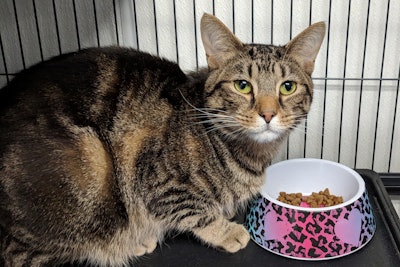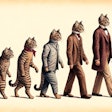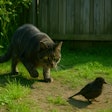
In the 2023-2024 American Pet Products Association (APPA) National Pet Owners Survey, respondents’ answers reflect that 66% of U.S. households owned a pet, which equates to approximately 86.9 million households with a companion animal. These figures represent a decline from 70% of households reported in the 2021-2022 APPA survey. Dogs remained the most populous pet in the United States, with nearly 20 million more households owning dogs than cats. Cats were the second most frequently kept companion animals. Dogs and cats both exceeded other animals by a wide margin.
Number of U.S. Households that Owned a Pet in 2023-2024
Bird - 6.1 million
Cat - 46.5 million
Dog - 65.1 million
Horse - 2.2 million
Freshwater Fish - 11.1 million
Saltwater Fish - 2.2 million
Reptile - 6.0 million
Small Animal - 6.7 million
Pet ownership by generation in 2022
Although pet ownership rates seem to have declined, pet spending increased. U.S. residents spend US$58.1 billion on pet food and treats in 2022, according to NielsenIQ data reported by the APPA.
“Pet spending in 2022 was up nearly 11% from the previous year,” APPA President and CEO Peter Scott said in a press release. “While we outperformed our 2022 forecast, we know this increase can be attributed in large part to higher than anticipated inflation, and we expect spending will follow a similar trajectory and remain steady in 2023. Along those same lines, we saw pet ownership normalize and return to pre-pandemic levels, which is not surprising given the uptick we saw in pet acquisition as a result of the pandemic. Overall, we are excited to report all signs continue to point to the strength of the industry.”
This survey marked the first time that that the survey results reflected a relatively even split between older and younger generations. That demographic change has implications for the pet food industry because of the different attitudes among the generations. Baby boomers, once the largest pet-owning group, have steadily declined over the past several years. In 2018, baby boomers comprised 29% of U.S. pet owners, then 27% in 2020. By 2022, that figure had declined to 24%. Generation X now outnumbers baby boomers by 1%. Gen X pet ownership varied, dropping from 26% in 2018 to 24% in 2020, rising to 25% in 2022.
The youngest generation in the survey, Gen Z, also grew the most. As this group leaves home and sets up their own homes, Gen Z has been able to acquire their own pets too. Gen Z steadily grew from 11% of the pet-owning population in 2018 to 14% in 2020 and 16% in 2022.


















